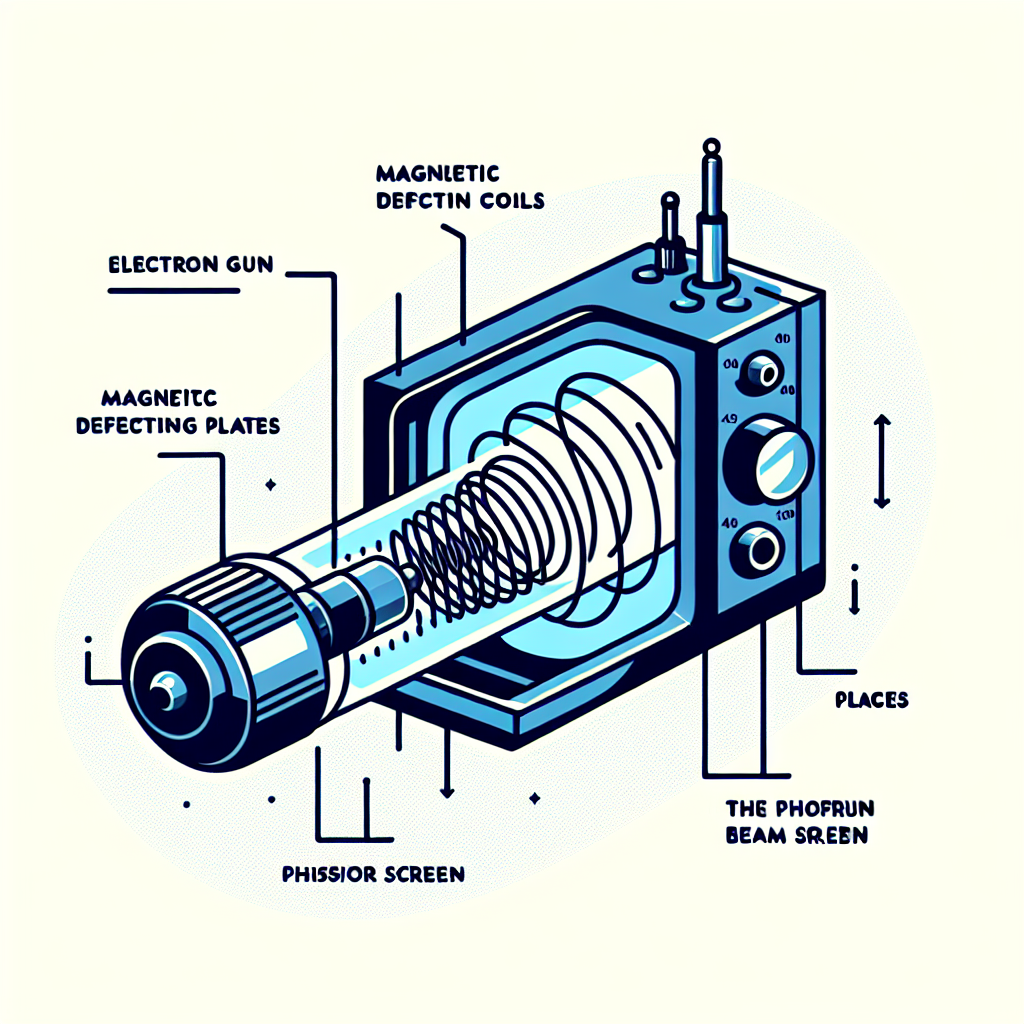In the world of display technology, Cathode Ray Tubes (CRTs) were once a cornerstone for televisions and computer monitors. A fundamental aspect of their operation lies in the precise focusing of the electron beam. Understanding how this beam is controlled and directed is key to appreciating the technology that predates modern flat-panel displays. This article delves into the functioning of electron beam focusing in CRTs, presenting detailed insights and breaking down the technical processes involved.
Understanding the Basics of CRT
A CRT operates by emitting a stream of electrons from an electron gun, guiding these electrons towards a phosphorescent screen where they strike and illuminate specific areas to form an image. The accuracy of this entire process hinges on the effective focusing of the electron beam.
Components of a CRT
To grasp how electron focusing occurs, one must be familiar with the primary components of a CRT:
-
Electron Gun: Generates and emits electrons.
-
Anodes: Positive electrodes that accelerate and focus the electron beam.
-
Deflection System: Steering mechanism (using magnetic or electrostatic fields).
-
Phosphorescent Screen: Coated surface that lights up when struck by electrons.
Electron Beam Generation
The process begins in the electron gun where a heated cathode releases electrons. These electrons are then shaped into a beam as they accelerate towards the anode. The fundamental goal here is to maintain a concentrated and directed beam towards the screen.
Techniques for Focusing the Electron Beam
To achieve a sharp image quality, the electron beam must be tightly focused. This focus is attained through several means:
Electrostatic Lenses
Electrostatic focusing employs charged plates or grids to manipulate the electron beam. As the beam passes through these components, the varying potential differences adjust the beam’s trajectory and convergence point.
-
Wehnelt Cylinder: A control grid that modulates the intensity and focus of the electron emission.
-
Accelerating Anode: Works in conjunction with focusing anodes to hone the beam’s path.
Magnetic Lenses
Magnetic focusing uses coils to create magnetic fields that influence the path of the electron beam. This method is often preferred for high-precision focusing due to its efficiency at steering and shaping the beam.
-
Focusing Coil: Generates a magnetic field that directs the electrons into a narrow beam.
-
Deflection Coils: Additional coils that further refine beam direction and focus.
Maintaining Beam Focus
After initial focusing, maintaining the beam focus across the entire screen is crucial. This consistency is safeguarded by:
Dynamic Focus Adjustment
To correct for any disparities across the screen, dynamic focus adjustment continuously tweaks the focus based on the beam’s position. This is often achieved through altering voltages in the electrostatic focusing apparatus.
Pincushion Correction
This is a supplementary technique used to ensure the beam remains correctly aligned, compensating for any geometrical distortions that might otherwise affect focus quality.
Factors Influencing Beam Focus
Several factors can affect the focusing efficacy of the electron beam in a CRT:
Screen Size and Shape
Larger screens necessitate more precise focusing mechanisms due to the increased distance the beam must travel and the wider area it covers.
Electron Beam Current
Higher currents can cause broader beams, requiring more substantial focusing efforts to maintain image sharpness.
Temperature Fluctuations
Variations in temperature can impact the components’ performance, particularly the electron gun and focusing elements, altering the beam’s trajectory and focus consistency.
Advantages and Limitations of CRT Technology
While exploring the electron beam focusing, it is essential to recognize the broader context of CRT technology:
Advantages
-
Color Accuracy: Excellent color reproduction capabilities.
-
Contrast: Superior contrast ratios due to deep blacks and bright whites.
-
Viewing Angles: Wide viewing angles without color distortion.
Limitations
-
Size and Weight: Bulkier and heavier compared to modern displays.
-
Energy Consumption: Higher power usage relative to LCDs and LEDs.
-
Potential Image Distortion: Susceptible to magnetic interference leading to image distortion.
Conclusion
The electron beam focusing in a CRT is a sophisticated process, integrating electrostatic and magnetic techniques to ensure high-precision image display. Despite being largely supplanted by newer technologies, understanding how CRTs function underscores the profound engineering accomplishments that have driven display technology forward.

